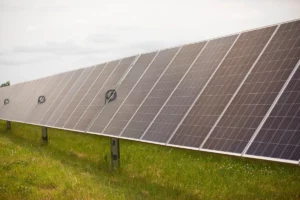
by Dick Hall-Sizemore
Dwight Yancey, editor of Cardinal News, has a fascinating piece today dealing with solar energy in Southwest Virginia and Southside Virginia. In a piece replete with information and rumination, he sets out 13 takeaways from the recently-released Virginia Solar Survey “and other solar energy news, as viewed through the lens of the Southwest and Southside parts of the state.”
I am not going to go through all of them here, mainly because I could not do Yancey’s descriptions justice. In addition to being an advocate for solar, he does acknowledge some of the problems and objections that have been raised. Here are some of the points that stood out to me:
- “Virginia’s solar boom is concentrated in the Piedmont, from the North Carolina line to the outskirts of Northern Virginia, with emphasis on Southside.”
- Virginia now generates more power from solar energy than it does from coal.
- Some jurisdictions are beginning to resist solar. After sifting through the objections, Yancey’s conclusion is that “…some counties see solar farms as industrial facilities that are simply incompatible with the community’s rural character.” He warns, “Solar advocates may want to be mindful of this lest they trigger some backlash that has nothing to do with climate change denial and everything to do with land use.”
- One of the objections raised has to do with solar taking up prime farmland. Along these lines, the General Assembly enacted HB 206 (R-Webert, Fauquier). The legislation requires anyone applying for a permit for a small renewable energy project to submit a mitigation plan if the project would “disturb more than 10 acres of prime agricultural soils or 50 acres of contiguous forest lands, or if it would disturb forest lands enrolled in a program for forestry preservation.” (It is worth noting that such a requirement is not in place for any plan to build a subdivision or shopping mall.)
- Every school, especially a new school, should have solar panels on its roof. Schools in Middlesex County that have solar panels are now generating 100 percent of the energy they need. Some schools in North Carolina generate more energy from their solar panels than they need enabling them to sell the excess to the grid. In short, localities can save money with solar panels.
- Solar farms offer opportunities for small, but important, benefits. Three Virginia localities require that beehives be installed on solar farms. The decrease of beehives in this country is well-documented. All that open land on solar farms would be ideal for beehives. Pollinators in general are in trouble due to loss of habitat. Requiring solar farm operators to put in plants such as milkweed, which are the sole food source for monarch caterpillars, and other pollinators would be greatly beneficial to the localities, including farmers.

Leave a Reply
You must be logged in to post a comment.